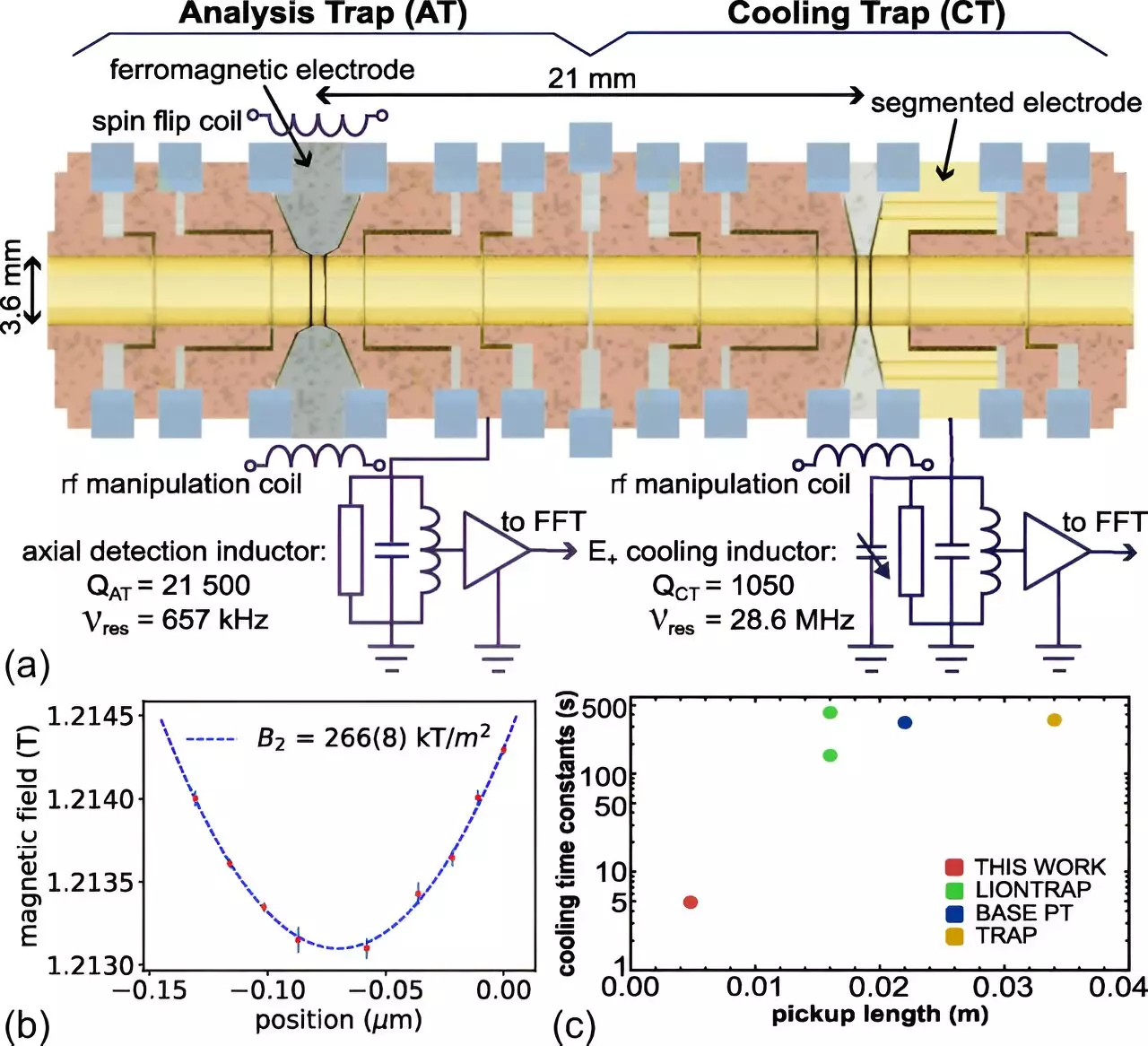The universe is a vast and complex place, filled with mysteries that continue to baffle scientists. One such mystery is the question of why there is an abundance of matter in the universe, while antimatter remains scarce. The standard model of particle physics predicts that after the Big Bang, equal amounts of matter and antimatter should have been created. When matter and antimatter particles collide, they annihilate each other, resulting in pure energy. However, this is not the case, as there is a clear imbalance that has yet to be explained.
To tackle this conundrum, the BASE international research collaboration at CERN has been conducting groundbreaking experiments to shed light on the properties of antimatter. Led by Professor Dr. Stefan Ulmer from Heinrich Heine University Düsseldorf, the team has developed innovative techniques to measure the mass and magnetic moment of antiprotons with unprecedented precision. This has the potential to identify subtle differences between matter and antimatter particles.
One of the key achievements of the BASE collaboration is the development of a trap that can rapidly cool individual antiprotons to extremely low temperatures. This “Maxwell’s daemon cooling double trap” allows researchers to selectively isolate the coldest antiprotons and discard warmer particles. By reducing the cooling time from 15 hours to just eight minutes, the team has significantly increased the efficiency of the experiment, enabling the collection of essential data in a much shorter period of time.
Through their meticulous measurements, the researchers have already determined that the magnetic moments of protons and antiprotons differ by a minute amount, on the order of 10^-9. This level of precision is unprecedented and opens the door to further refinements in magnetic moment accuracy. The goal of the next measurement campaign is to improve this accuracy to 10^-10, bringing scientists closer to unraveling the mysteries of antimatter.
Looking ahead, Professor Ulmer envisions constructing a mobile particle trap that can transport antiprotons from CERN to a new laboratory at HHU. This advancement would allow for even more precise measurements, potentially enhancing the accuracy by another factor of 10. The ability to store individual particles for extended periods using traps offers endless possibilities for further exploration and discovery in the realm of antimatter physics.
Traps play a crucial role in storing and manipulating fundamental particles for scientific experiments. The development of Paul traps and Penning traps by physicists like Wolfgang Paul and Hans G. Dehmelt has revolutionized the field of particle physics. These traps use magnetic and electric fields to control particles, offering a versatile tool for conducting targeted measurements and investigations.
The research conducted by the BASE collaboration at CERN represents a significant step forward in the quest to understand the nature of antimatter. By pushing the boundaries of precision measurements and experimental techniques, scientists are edging closer to unlocking the secrets of the universe’s fundamental building blocks. The ongoing pursuit of knowledge in this field holds the promise of groundbreaking discoveries and paradigm-shifting developments in the realm of particle physics.


Leave a Reply